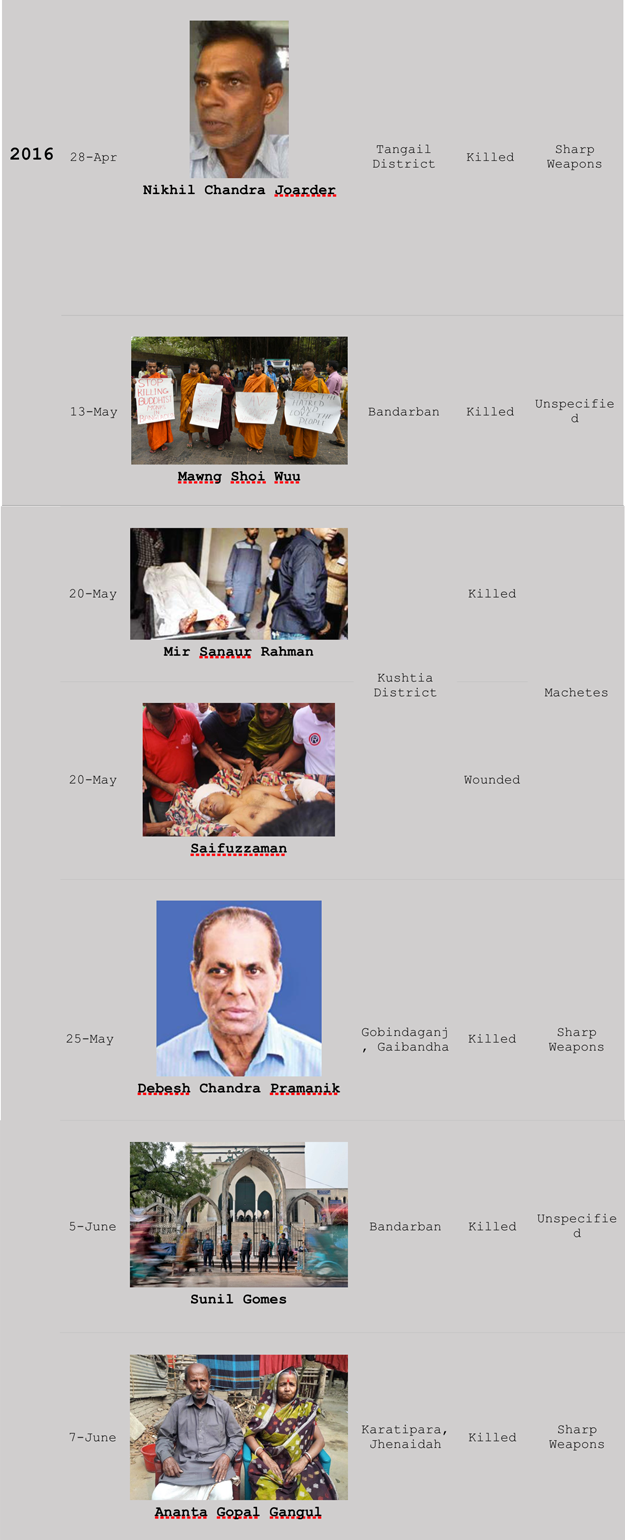Special Report: Terror Rising in Bangladesh

Today, Ansar al-Islam, the Bangladesh division of al-Qaeda in the Indian Subcontinent (AQIS), claimed responsibility for the killing of LGBT magazine editor Xulhaz Mannan and his associate in Dhaka. The message comes only three days after the Islamic State’s (IS) claim for the April 23 murder of Rezaul Karim Siddique, an English professor at Rajshahi University, whom attackers killed with machetes. Only two weeks earlier, on April 8, AQIS claimed credit for the killing of blogger Nazimuddin Samad, an act which the group intended "to teach a lesson to the blasphemers."
These violent instances show just a piece of a spike in jihadi attacks in Bangladesh this past year. Bangladesh’s situation is a unique one: the country, not a home to war zones like Syria, Iraq, or Afghanistan, continues to suffer increasing attacks from jihadists—most of which being assassinations on soft targets.
“As soon as the Islamic State began carrying out attacks in Bangladesh, we predicted attacks would increase while the group and AQIS competed,” says SITE Director Rita Katz. “This is exactly what we are seeing now as the Islamic State claimed six attacks in 2016 alone.”
Since its first claim in Bangladesh on September 28, 2015, just seven months ago, IS has taken responsibility for 15 attacks in the country so far.
Since its first claim in Bangladesh on September 28, 2015, just seven months ago, IS has taken responsibility for 15 attacks in the country so far. The attacks accompany AQIS’ and its affiliates’ longstanding grip in the country, tallying 13 attacks in the country (11 killed and five wounded) since 2013.
Lists of attacks in Bangladesh from both of these groups are provided at the end of this report.
Both AQIS and IS have shown drastically different targets and attack methods in this time. AQIS has focused on those perceived to insult Islam, largely resorting to knife and machete attacks. Though today’s claim by Ansar al-Islam for the killing of Mannan marks the group’s first attack on an LGBT figure, it remains consistent with the group’s aims. A May 15, 2015 list of target categories by the group includes those “trying to destroy Muslim social values”:
Those who are trying to destroy Muslim social values by introducing and spreading the nudity and zina among the Muslim youths. "Keep in mind that there is a huge difference between doing something bad personally and spreading it in the society."

IS’ target range has shown to be contrastingly open-ended, including foreigners of “Crusader coalition states,” Christian converts, Hindus, police, and Shi’ite buildings. Methods have included shootings, stabbings, and the use of explosive devices.
Katz: "The situation in Bangladesh will only worsen as IS and AQIS continue their deadly rivalry."
Amid the attacks, Bangladesh government officials have denied the presence of IS in their country, at times accusing political opposition of involvement in the events.
“The situation in Bangladesh will only worsen as IS and AQIS continue their deadly rivalry,” says Katz. “It is crucial that security personnel in the country acknowledge and study such networks within their borders."
To show the scale of jihadist assasinations in Bangladesh, lists of AQIS-claimed attacks since 2013 and IS-claimed attacks since 2015 follow.
AQIS-Claimed Attacks Since 2013

IS-Claimed Attacks Since 2015

